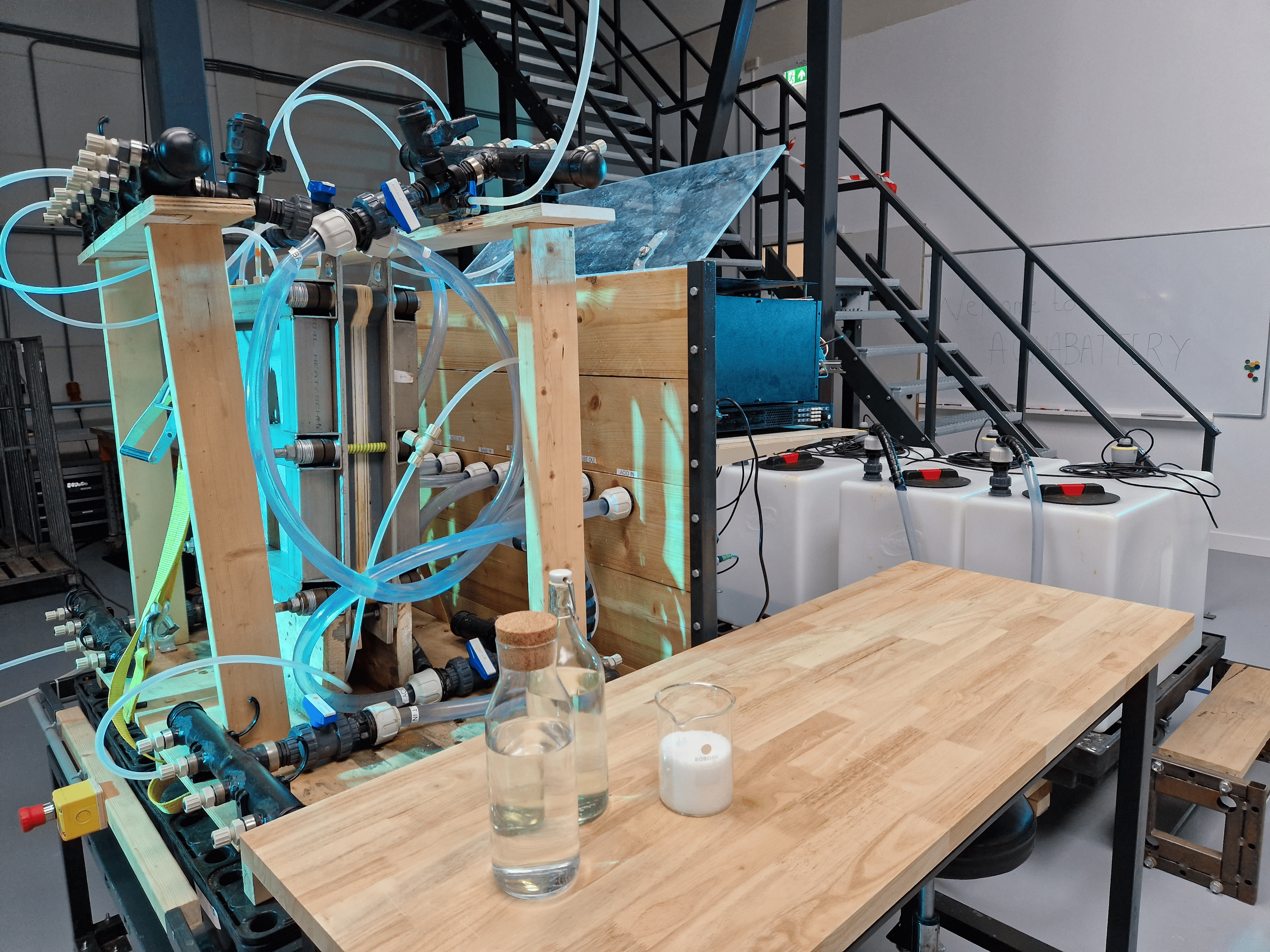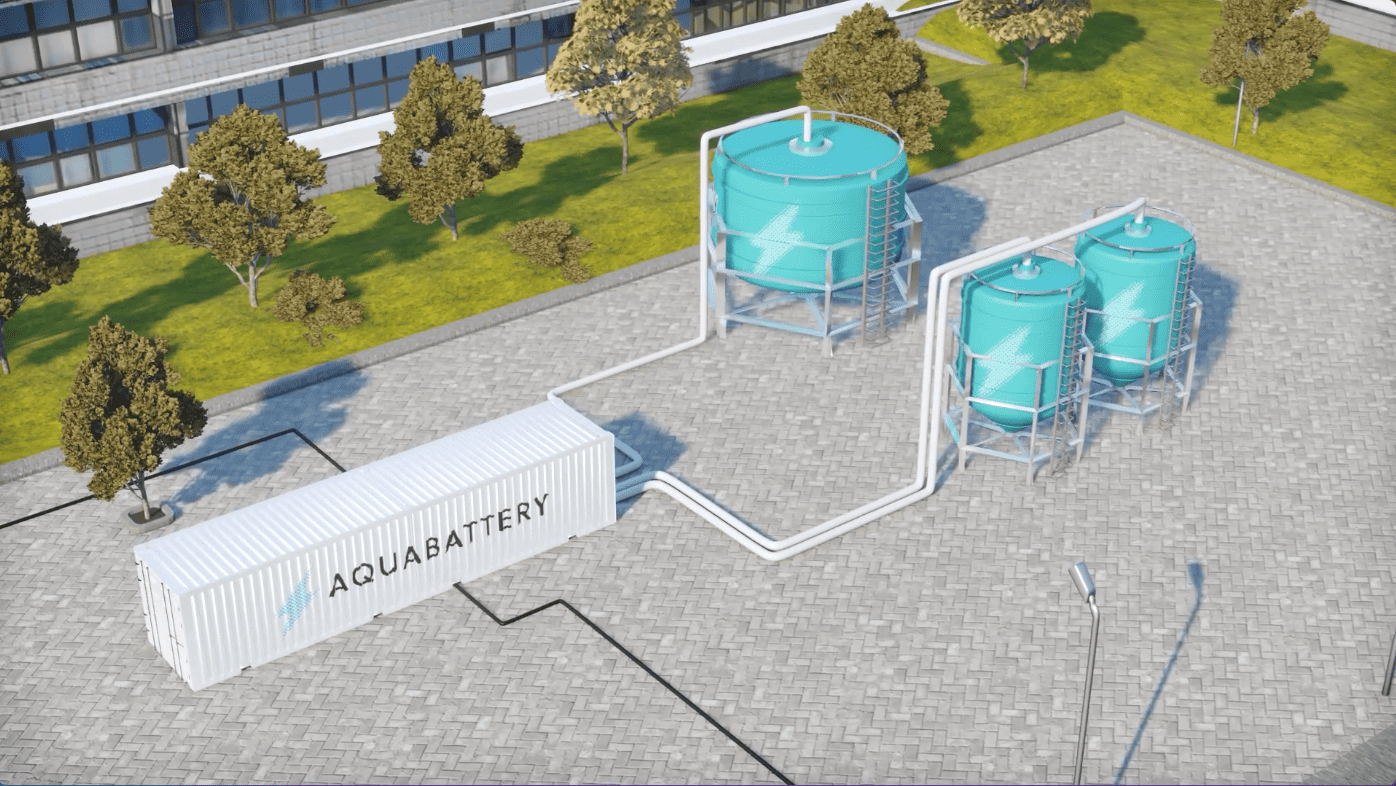
A big tank, a generous amount of water, and abundant table salt. It isn’t the incipit of the ingredients and tools needed to cook a meal for the whole neighborhood, but what’s required to create a safe and efficient battery to store energy from your solar panels. Don’t venture into DIY, though; this Dutch company knows better.
Why this is important:
Behind many battery technologies are materials like lithium, mined only in some parts of the world. Europe doesn’t have direct access to them, so it depends on other geographies to manufacture batteries. However, alternative solutions exist, and AQUABATTERY is one of them.
Born in the Delft University of Technology corridors and headquartered in Alphen aan de Rijn, AQUABATTERY has developed a robust, climate-proof energy storage solution. Their technology stores power in water, offering both a safe and cheap solution. Most importantly, the system leverages raw materials as available as water and table salt, thus avoiding the reliance on other countries for lithium supply, for instance.
Batteries greatly help the electricity grid, as they ease the adoption of more renewable-generated power, stabilize loads, and manage demand. In light of its nature, the European Innovation Council dubbed AQUABATTERY’s system “one of Europe’s breakthrough technologies and game-changing innovations.” Behind the concept are long years of development. When visiting the new headquarters of the Dutch company, the CEO Jiajun Cen, summarized the long years this way: “Although our idea is straightforward, the technology behind it is quite complicated, but making it work and economically available were the main challenges on our way.”
This is an article from our magazine IO Next: Energy Storage. In the puzzle of our new energy system, balancing supply and demand for energy is the greatest challenge. And that’s why we dedicate this magazine to that crucial puzzle piece.

Playing with energy potentials, as biological cells do
The stationary battery comprises two units: a power module containing membrane stacks and a storage unit made of water tanks. During the charging process, saltwater flows through membranes, separating it into acid and base – each ending in a separate tank – thereby storing energy. When discharging the battery, the two streams are combined and pass through the membrane again, generating renewable electricity.
“Having a salt gradient – the energy created from the difference of salt concentration in two fluids – creates an energy potential difference,“ explains Emil Goosen, founder of AQUABATTERY. The membrane stacks mimic what biological cell membranes do. “The process replicates active salt transfer, which balances water and salt. After doing some sport or drinking a lot, that balance needs to be restored, and some cells pick certain salt ions from the bloodstream,” he clarifies.
Moreover, storage capacity and power are scalable, allowing for long-duration energy storage – between 8 and 100 hours. “Increasing the size of the reservoirs and the volume of water increases the storage duration time,” Goosen underlines. “Therefore, we make it flexible for each application and storage time needed, combining our power module with different-sized water tanks,” Cen adds.
Flow batteries
The table salt and water battery falls under the category of flow batteries. A flow battery is one where two liquids, separated by a membrane to enable ion exchange, undergo electrochemical reactions. AQUABATTERY’s system features membrane stacks placed into a 40-ft sea container connected with pipeworks to the water reservoirs. Therefore, it is a good fit for stationary applications – such as storing excess power from solar or wind parks.
“In the plans for Horizon Europe – one of the EU’s major research and innovation funding programs – lithium batteries were mentioned hundreds of times, while flow batteries maybe twice,” states Kees van de Kerk. He’s the president of Flow Batteries Europe. This umbrella organization brings together several flow battery stakeholders in the EU, which campaigned to promote and showcase the potential of these technologies in the past few years.
Amid the many technological options available in the battery field, flow batteries are optimal for two kinds of usage. “High cycle applications – they can be used for thousands of cycles without compromising their performances – and long storage ones are the two sweet spots,” he says. In his view, doing so with salt and water is just “brilliant”.

Efforts
To get to this point, AQUABATTERY has worked for almost a decade. From the very first experiments in a garage box, countless hours of research and experiments have been devoted to the idea. In the new company’s production space, several prototypes provide a tangible timeline of the endeavor.
The first concept was charging and discharging by using fresh and saltwater. The company then shifted to today’s acid-based solution to improve performance and experimented with different membrane stacks. In 2017, AQUABATTERY set up its first pilot in the Delft University of Technology’s Green Village. Three years later, the battery took a trip to the island of Pantelleria, Italy, and was tested at a local power plant. The team has radically improved its technology over the years, increasing power and energy density by tenfold. In 2022, the system was also tested in the Dutch town of Gorinchem’s sewage treatment plant, which uses self-generated renewable electricity from a solar park.

Future applications
The Dutch company can offer a ten-kW power module and plans to upscale the technology to 100 kW and 300 kW in the coming years. As part of this process, the company partnered with the Norwegian renewable energy company Statkraft. This year, AQUABATTERY will conduct a pilot project at the water knowledge institute Deltares campus in Delft to validate the technology scaling and the business case for solar-plus-battery storage.
For AQUABATTERY’s founders, the best is yet to come. Driven by the expansion of renewables, they foresee bringing their product to different users. “At first, we target industrial and commercial applications. Companies will be required to have solar panels, so they’ll need long-duration energy storage to manage electricity production and consumption efficiently. Down the line, we envision installing our batteries in solar and wind parks to buffer them,” concludes Cen.

